Highlights and photos of some of the New Jersey Record Saltwater Fish are below. For more information see the Record Fish Program page.
| Highlights of NJ State Record Saltwater Sport Fish | State Record Photo |
|---|---|
|
State Record Black Sea Bass Steve Singler of Philadelphia, PA, reeled in the new record Black Sea Bass on December 12, 2015. The fish weighed in at 9 pounds, 0 ounces, eclipsing the previous state record by 11.5 ounces. The fish measured 27.5″ in length and had a girth of 18.5″. Steve was fishing with a Shimano rod and reel with 40-pound Power Pro line off the boat Voyager, captained by Jeff Gutman. A clam on 3/0 hooks served as the bait. Steve was bottom fishing in 180-200 feet of water when the fish hit. |
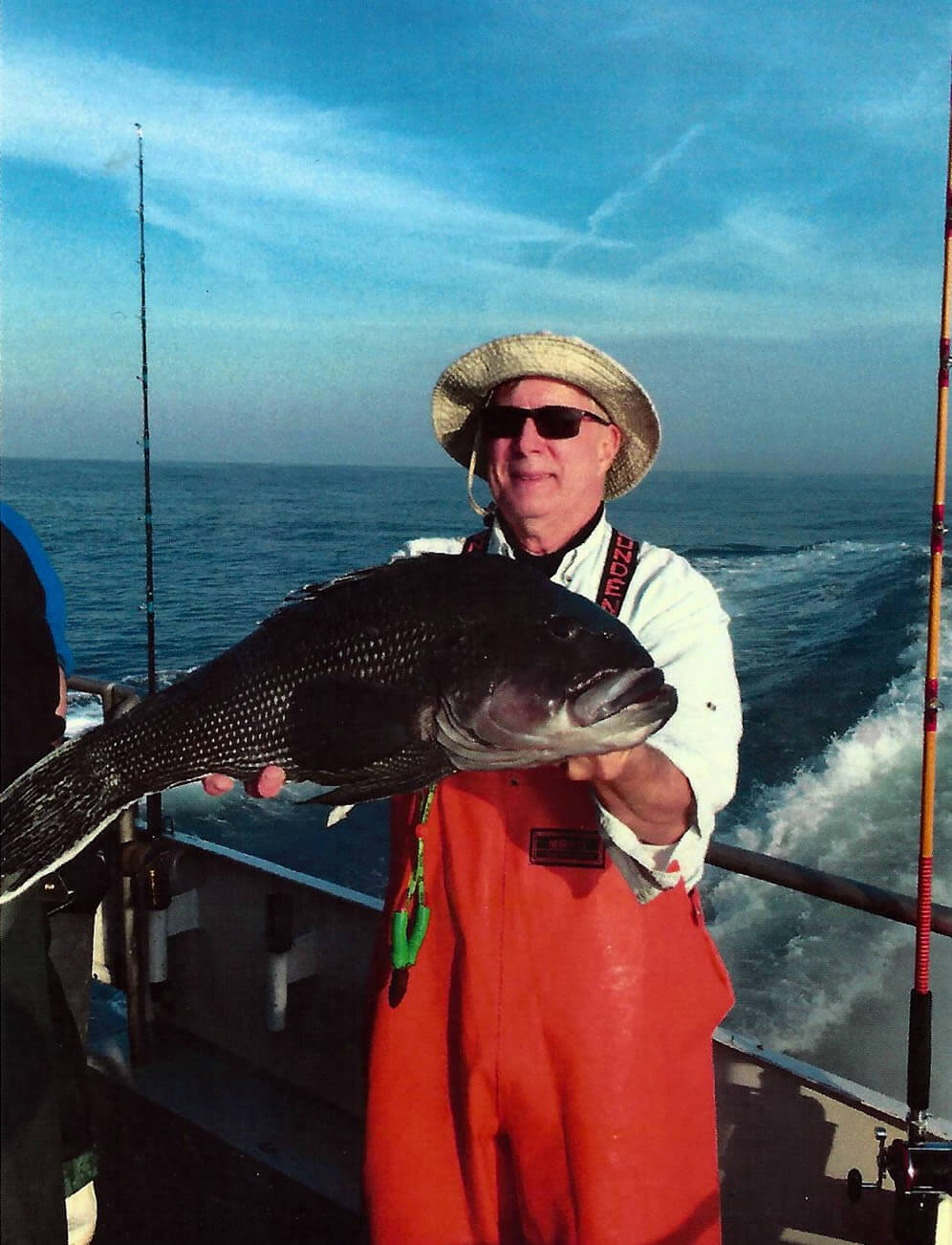
|
|
State Record Cobia Len Andalis of Philadelphia reeled in the new state record Cobia on August 9, 2019. The fish weighed in at 90 pounds, 6 ounces, eclipsing the 20-years-old previous state record by 3 pounds, 6 ounces. The fish measured 66″ in length and had a girth of 30″. Len was fishing off his boat, the Francesca Rose, on the McCries Shoal when the fish hit while he was casting. Len was using a Conley rod and a Shimano 8000 reel with 17-pound line. A white bucktail with Sluggo served as the lure. |
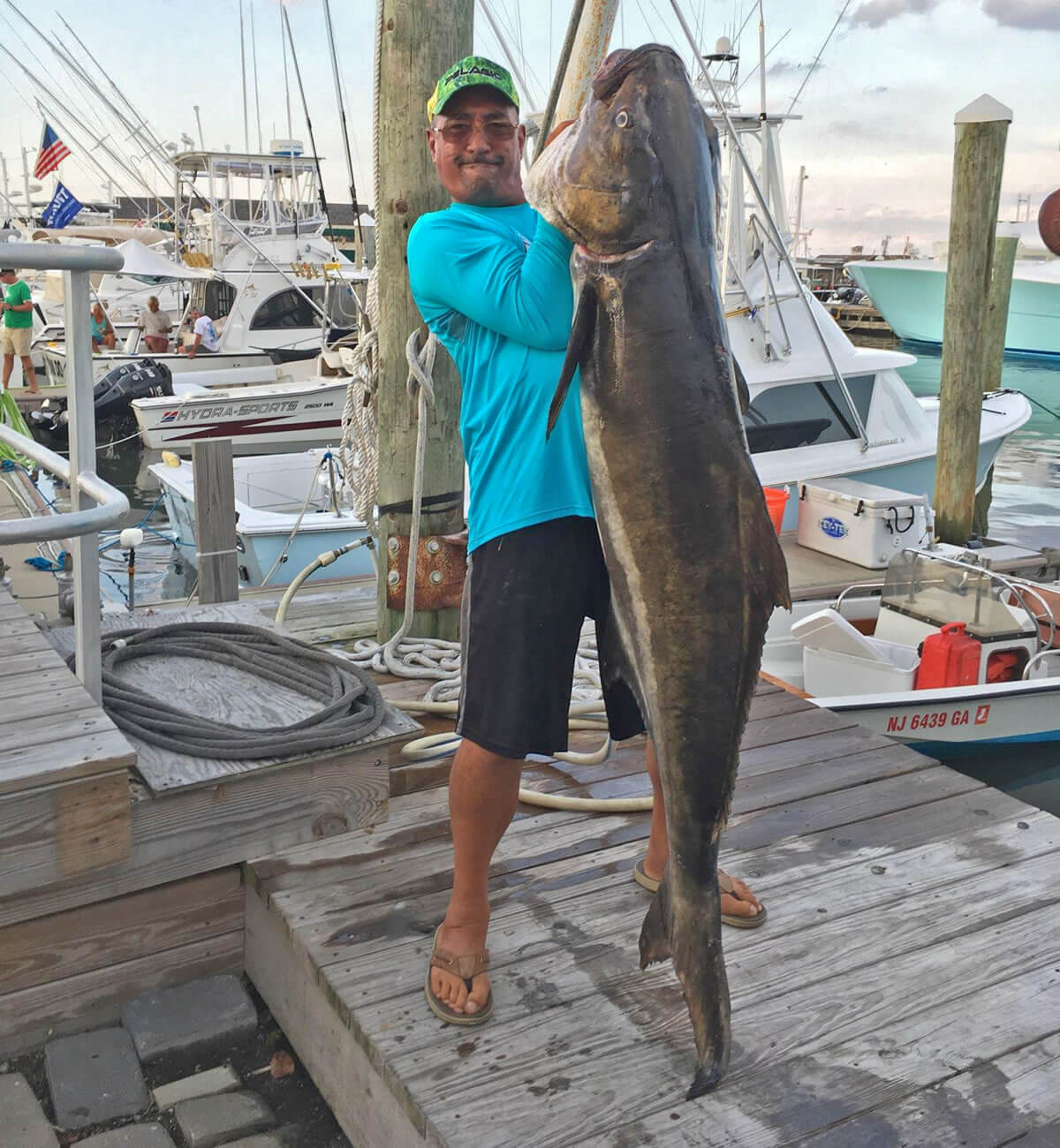
|
|
State Record Cunner John Zema of Laurence Harbor, reeled in the new state record Cunner on May 26, 2019. The fish weighed in at 3 pounds, 8.8 ounces, eclipsing the previous state record by 6.4 ounces. The fish measured 18.5″ in length and had a girth of 13″. John was fishing off the boat Voyager, captained by Denis Katliarov. John was casting in the Atlantic Ocean when the fish hit. John was using a conventional rod and reel with 50 pound braided line. A clam served as the bait. |
|
|
State Record Smooth Dogfish Ed DiMarcantonio of Wayne, PA, reeled in a new state record Smooth Dogfish on May 31, 2020. The fish weighed in at 22 lbs. 0 oz. eclipsing the old record by 2 lbs 4.8 oz. The fish measured 51 inches in length and had a 29-inch girth. Ed was fishing from the Strathmere Beach when he landed the fish, He was using a Lamiglas Super Surf 11′ rod with a Van Stall 250 reel and 40-pound braided test when the fish hit. A bunker served as the bait. |
|
|
State Record Red Hake (Ling) The NJ DEP Division of Fish and Wildlife has confirmed that Billy Watson from Lansdale, Pennsylvania has officially become a member of an elite fishing club by catching a new state and IGFA world record Red Hake, Urophycis chuss. The 12 pound 13 ounce fish, also known as a Ling, was caught on February 20, 2010 approximately 20 miles ESE of Manasquan NJ. The fish measured 33 inches in length and had a girth of 19 inches. It surpassed the previous state record of 11 pounds, 1 ounce set in 2002 by Natalie Jones for a fish caught off Brielle. Billy was bottom fishing at the Mud Hole on the Jamaica II with Captain Steve Spinelli at the helm when he hooked the big fish. He was using a St Croix medium heavy rod and a Diawa Satist 20H reel loaded with 50-pound Power Pro line and a Gulp 2” Glo Shrimp for bait. Red hake are rarely known to attain weights exceeding 6 or 7 pounds, so this particular fish can truly be considered a monster hake. White hake on the other hand are very similar looking and known to attain weights of as much as 40 pounds. Since the two species are so similar and the weight of the fish Watson caught was more in the white hake range, marine fisheries biologists diligently examined the fish to confirm its identification and its world record status. Division of Fish and Wildlife marine fisheries biologists first examined the fish and counted scale rows and the gill rakers on the upper portion of the first gill arch, which are both reported to be valid diagnostic characters. The initial examination showed the fish to be a red hake. The identification was then confirmed by ichthyologists at the Academy of Natural Sciences in Philadelphia who x-rayed the specimen to determine the number of abdominal vertebrae, another diagnostic character. This too identified the fish as a red hake and it has been added to the Academy’s extensive fish collection. The red hake can be found from the Gulf of St. Lawrence to North Carolina, and is most abundant from the western Gulf of Maine through Southern New England waters. They are a member of the cod family and as such possess a distinctive barbel on their chin. Red hake vary in color depending upon their environment, but tend to be a mottled red/brown to olive/brown on their upper sides with large irregular pale light brown patches becoming a dirty white to bright white underneath. Red hake prefer soft sand or muddy bottom, and feed primarily on crustaceans and rock crabs, as well as fish such as haddock, silver hake, sea robins, mackerel and small red hake. Primary predators of red hake include spiny dogfish, cod, goosefish, and silver hake. With identification of the fish confirmed, Billy can now enjoy his new world record holder status and rest assured that his catch will definitely be a hard one to beat! |
|
|
State Record Northern Kingfish The New Jersey Department of Environmental Protection’s Division of Fish and Wildlife has certified a new state record northern kingfish that was taken from Barnegat Bay. Chester Urbanski of Lambertville, Hunterdon County caught the 2 pound, 8 ounce, northern kingfish on September 22. It weighed two ounces more than the previous record taken from the surf at Margate Beach in October of 2003. Urbanski and his wife Cathy were bottom fishing with a squid strip from a rental boat when he caught the record kingfish on 10-pound test line. The fish measured 18½ inches in length with a 10-inch girth. A member of the drum family, the northern kingfish can be identified by the long spine on its first dorsal fin and barbels on its snout used to find food in the sand. On fresh specimens, coloring on the back and sides is gray and sometimes blackish above with five or six narrow bars. Found throughout the coastal waters of Maine to south Florida, the northern kingfish is mainly an inshore species occurring from the tideline to depths of 30 feet in salt and brackish water. Schools of northern kingfish frequent sand, shell or gravel bottoms, especially near inlets, sand bars or along the edges of channels where they feed on worms, crabs and shrimp. Individuals can reach up to 3¼ pounds, but anything over 2 pounds is unusual. |
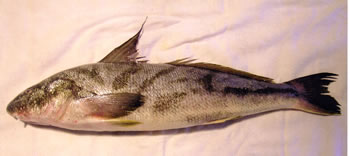
|
|
State Record Sailfish According to the New Jersey Department of Environmental Protection’s Division of Fish and Wildlife, a new state record sailfish was taken from Linden Kohl Canyon on September 18. Dr. John A. Tallia of Rock Hill, New York caught a 43 pound, 4 ounce sailfish that weighed 2 pounds, 4 ounces more than the previous record taken from Wilmington Canyon in 1984. Dr. Tallia was trolling a Black Bart Hex lure when he hooked the fish on Shimano equipment with 50-pound test. The fish measured 64 ½ inches in length with a 22 ½-inch girth. Atlantic sailfish are found in both the Atlantic and Pacific oceans. They generally remain in water temperatures between 70° and 83°F though they may be found in deeper water. Coloring is dark blue along the back. The underside is white with brown speckling. Side markings consist of about 20 bars, each made up of many light blue spots. The upper jaw projects into a long bill that is approximately twice the length of the lower jaw. Two dorsal and anal fins are present. The first dorsal fin is much taller than the width of the body and runs most of its length. Sailfish feed mainly on squid, octopus and bony fishes including mackerels, tunas, jacks and needlefish. |

|
|
State Record Hickory Shad Robert Macejka of Point Pleasant Beach, New Jersey reeled in the new state record Hickory Shad on November 20, 2011. The fish weighed in at 2 pounds 13 ounces eclipsing the previous state record, caught by Don Cordts in 2010, by 13 ounces. Robert was fishing from the surf at Mantoloking and using a St. Croix Triumph rod and Penn reel when he landed his catch. |
|
|
State Record Sheepshead William Catino of Ventnor, New Jersey, reeled in the new state record Sheepshead on October 14, 2014. The fish weighed in at 19 pounds, 3 ounces eclipsing the previous state record by 2 pounds. William was fishing off a dock in Longport using a rod and Penn reel when he landed his catch. |

|
|
<a name="spot"
State Record Spot According to the New Jersey Department of Environmental Protection, Division of Fish and Wildlife, a new state record spot was taken from Little Sheepshead Creek in Little Egg Harbor, Ocean County. Robert Belsky, Jr. of Little Egg Harbor caught the 13-ounce spot on Sept. 21. It weighed 5 ounces more than the previous record taken from the Mullica River in 1991. Belsky was fishing off a bridge when he caught the record spot on 10-pound test line and a shrimp rig. The fish measured 10¾ inches in length with an 8 7/8-inch girth. A member of the drum family (including weakfish, black drum and kingfish), the spot has a blunt nose and forked tail. The body is about one-third as high as it is long and is marked on either side with a black spot close behind the upper corner of each gill. The color is bluish gray with gold reflections above and silver below. Usually found over sandy or muddy bottoms, they range from the inshore waters of Texas to southern New England in depths of up to 60 meters. Feeding mainly on worms and small crustaceans, spots typically live 2 to 3 years and grow to an average of 7 to 8 inches in length. |
|
|
State Record Tautog Chris Sullivan of Forked River reeled in a new state record Tautog on December 20, 2020. The fish weighed in at 25 lbs., 13 oz. eclipsing the previous record, set in 2015, by 7.08 oz. The fish measured 32 inches in length and had a 27-inch girth. Chris was fishing 20 miles off the Cape May coast in the Atlantic Ocean when he landed the fish. Chris was out on the boat Fishin’ Fever which is captained by Tom Daffin. Chris was using a Century Pro Togger rod with a Daiwa Saltiga reel and 65 pound braided test when the fish hit. White leggers served as the bait. |
|
| State Record Golden Tilefish | 
|
|
State Record Blueline (Gray) Tilefish George Hanakis of Perth Amboy, reeled in the new state record blueline (gray) tilefish on September 1, 2021. The fish weighed in at 23 pounds, 8 ounces, eclipsing the previous state record by 4 ounces and measured 34” in length with a girth of 25”. George was bottom fishing from the boat, Jamaica, captained by Howard Bogan, Jr. They were located in Wilmington Canyon when he caught the tilefish with a Shimano Terez rod, a Gamakatsu lure and a Daiwa reel with 100 pound test braided line. |

|
|
State Record Gray Triggerfish The NJ DEP Division of Fish and Wildlife has announced that James Massimino of Neptune made his way onto the state record fish list recently by landing a new state record Gray Triggerfish. James was fishing off a boat when he reeled in the 6 pound, 11 ounce fish, eclipsing the old record caught by Ronald Pires in 2008 in High Bar Harbor by 15 ounces. James was fishing off the boat, Striper Snyper, captained by Stauros Dallaportas on September 8. The boat was fishing off the Sea Girt Reef when the fish hit his line while bottom fishing. James was using an Abu Beast reel spooled with 50-lb. test braided line and a Lamiglas rod. He used crab for bait. The new record gray triggerfish measured 19.25 inches in length and had a girth of 20.75 inches. |
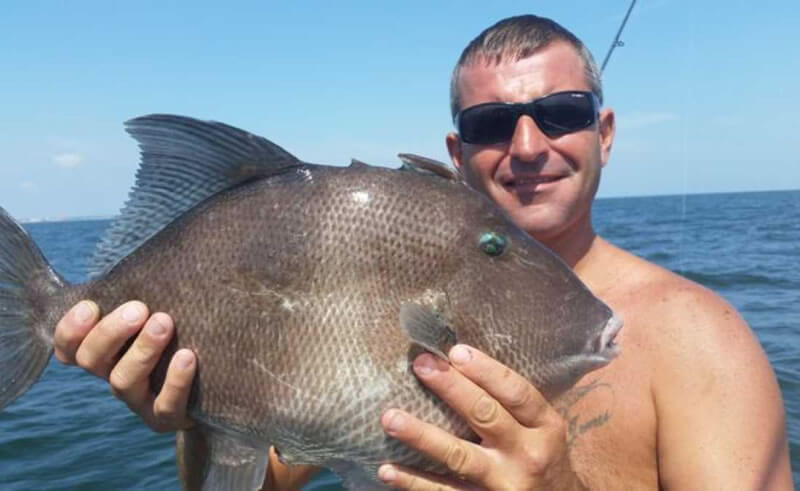
|
|
State Record Albacore Tuna NJ Fish and Wildlife has announced that a new record albacore tuna was caught in October. The new record fish, caught by angler, Matthew Florio, broke the previous record for albacore tuna which had been caught in 1984 by 3.4 ounces. Matthew was chunking off the boat Luna Sea at the east elbow of Hudson Canyon when he reeled in the fish. Matthew was using a Kevin Bogan 30 Stand Up rod and Penn 30 reel with 60-pound monofilament when he landed the fish. A butter fish served as the bait. The new record albacore tuna measured 48 and 3/8 inches in length and had a girth of 37 inches. |
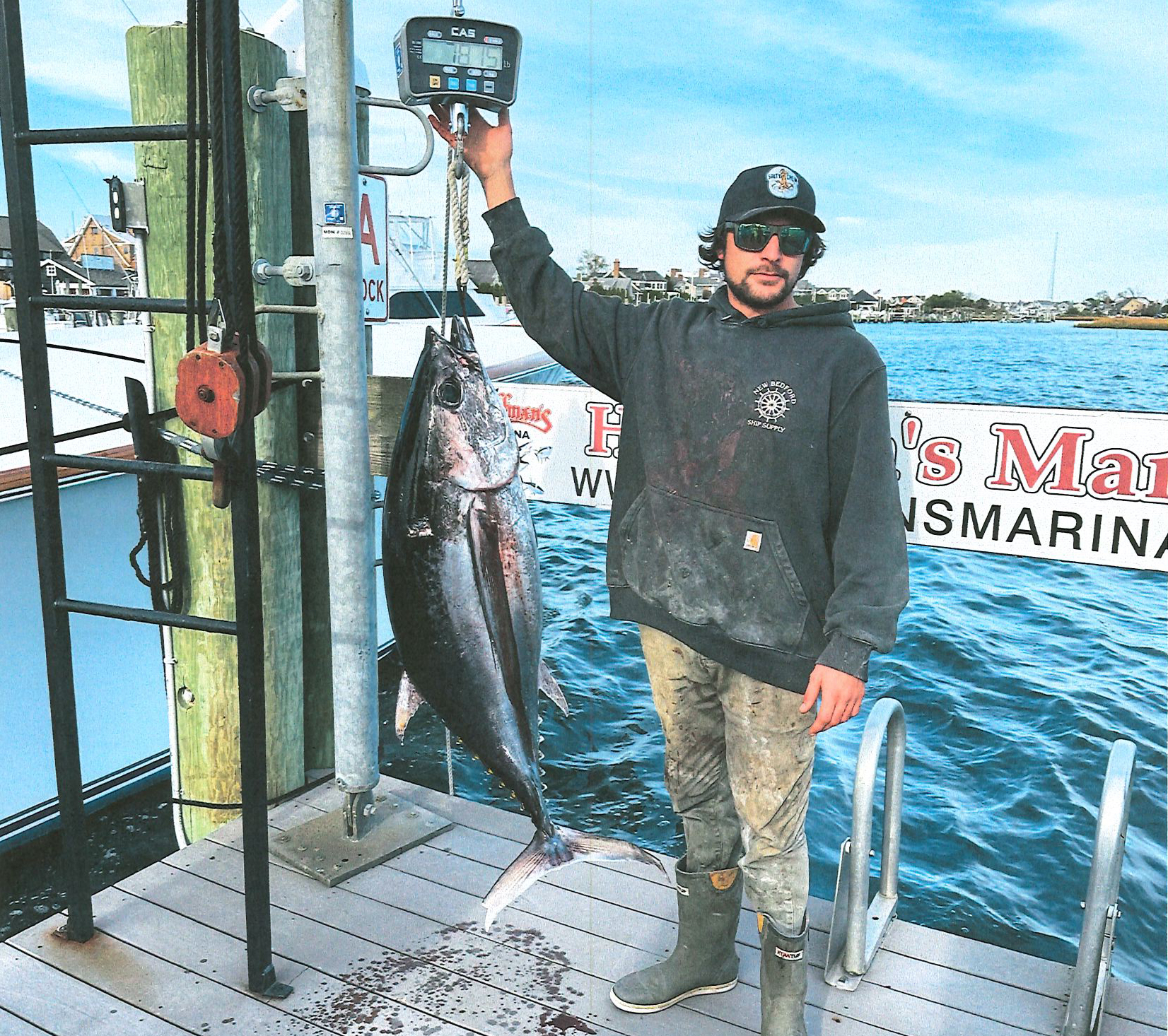
|
|
State Record Cutlassfish According to the New Jersey Department of Environmental Protection’s Division of Fish and Wildlife, new state records for cutlass fish was recently broken. A 6 pound, 11 ounce cutlass fish was caught from the Mudhole on July 22, 2002 by Mike Green of Newark. Green’s catch weighed 2 pounds, 3 ounces more than the existing record taken off the Cape May Reef in 2002. He was fishing from a charter boat when he caught the fish on 40-pound test line using bluefish for bait. The cutlass measured 62 inches long with a 12-inch girth. Cutlass fish are found throughout tropical and temperate waters worldwide, most often over muddy bottoms of shallow coastal waters in depths from 0 to 400 meters. Adults feed mainly on fishes and occasionally on squids and crustaceans. The body is extremely elongated, almost eel-like, tapering to a point. The mouth is large. The dorsal fin is relatively high; the anal fin is reduced to tiny spines; pelvic (hind) and caudal (tail) fins are absent. Fresh specimens appear steely blue with silvery reflections. |
|
|
State Record American Lobster The New Jersey Department of Environmental Protection (DEP) has certified that an American lobster taken earlier this month from the Almirante Wreck located nine miles off Absecon Inlet establishes a new state record, surpassing the mark set earlier this year. The record lobster, weighing 15 pounds, 3 ounces, was taken by William Sharp of Little Egg Harbor when he was scuba diving July 4. Marine fisheries research scientist Bruce Freeman of the DEP’s Division of Fish and Wildlife verified the catch, which had a 7.5-inch carapace (the protective upper shell covering). The previous record lobster weighed 11 pounds, 8 ounces and was taken off the San Jose Wreck in June. The American lobster is found in cool waters from Canada to North Carolina. Territorial and solitary in nature, they live on the ocean floor and prefer rocky crevices. New Jersey’s many artificial reefs provide the perfect habitat for this species. The average American lobster reaches a length of about 10 inches and weighs 2 to 5 pounds. |
|
|
State Record Sandbar Shark John Norton caught his 168.5 pound record-breaking Sandbar Shark on June 27, 1987 at Little Egg Inlet. He was using a Penn 6/0 reel on a 6-foot Shakespeare rod with 50 lb. test Pink Andes line. Bait was a chunk of bluefish. |
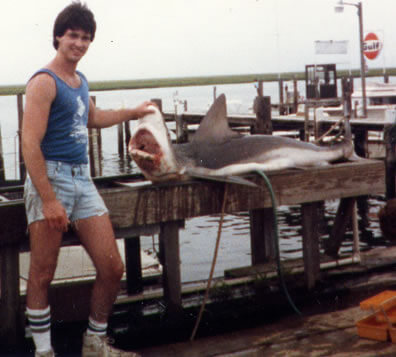
|
|
State Record Striped Bass Al McReynolds pulled this World Record striper from the Atlantic fishing at night off the Vermont Ave. jetty in Atlantic City following days of September Nor’easter storming in 1982. The fish was taken on a 5 1/2-inch long Rebel Black-back silver minnow plug on 20-pound test line. It took one hour and 40 minutes to land the fish on the slippery jetty. The fish measured 53 inches in length with a 34 1/2 inch girth, and was estimated to be 20 – 22 years old. Its 78 pound 8 oz. weight earned it the IGFA all-tackle record! |

|
|
State Record Hybrid Striped Bass James R. Fowler of Brigantine caught the 13 pound, 2 ounce striped bass hybrid off Brigantine on October 26, 2004. It weighed 11 ounces more than the previous record taken from the Cape May Rips in 1993. The fish measured 28½ inches in length with a 21¼-inch girth. Because the regulations are the same for saltwater hybrid stripers as they are for true strain striped bass, Fowler checked in the fish using a bonus card acquired earlier in the year. Fowler, a charter boat captain in Cape May and only a novice fly fisherman, was casting from the pier in his backyard when he hooked the fish on 15-pound fly line. Jim reported that he actually saw the fish feeding near the pilings before it eventually took the fly after about five passes. He landed the fish in 15 minutes. Amazingly, this is only the third bass he has ever caught on a fly rod! Fowler plans to get the fish mounted and in addition, will have a rendition carved in wood by local artist John Fish. The carving will then be donated as a raffle prize to the Ladies Invitational Bluefish Tournament of which Fowler’s wife Shirley is vice president. Proceeds will help fund a local mammography truck that offers free breast cancer screenings. The striped bass hybrid was developed in South Carolina during the mid 1960s, and is a cross between a striped bass and a white bass. Stocking of hybrid stripers in New Jersey began in 1984. Hybrid stripers are meant to fill a niche in the deeper, open water areas of a lake not frequented by other gamefish, and where there is an abundance of alewife herring or gizzard shad for food. The Division currently stocks three public impoundments with striped bass hybrids, and they are also stocked in several private waters by fishing clubs and water supply authorities. There are also several commercial aquaculture operations in South Jersey and Delaware that raise these hybrids. Striped bass hybrids are not intended to be found in marine waters, however, they have been known to migrate out of stocked fresh water systems. Under the Division’s fish stocking permit program, containment of the hybrids to reduce the possibility of migrating to marine waters is considered before approving a stocking permit. Total containment is not possible though, and it is to be expected that a very small number of fish may escape and migrate to marine waters. Therefore, the record fish categories for fresh and saltwater hybrid stripers remains. The hybrid can be identified by its deep-bodied shape, relatively small head and broken longitudinal stripes that may appear along its sides. Known for its hard fighting ability, this species is excellent table fare. Traditional fishing techniques and tackle used for striped bass are also effective on hybrids. Another picture of the record striped bass hybrid can be found here. |
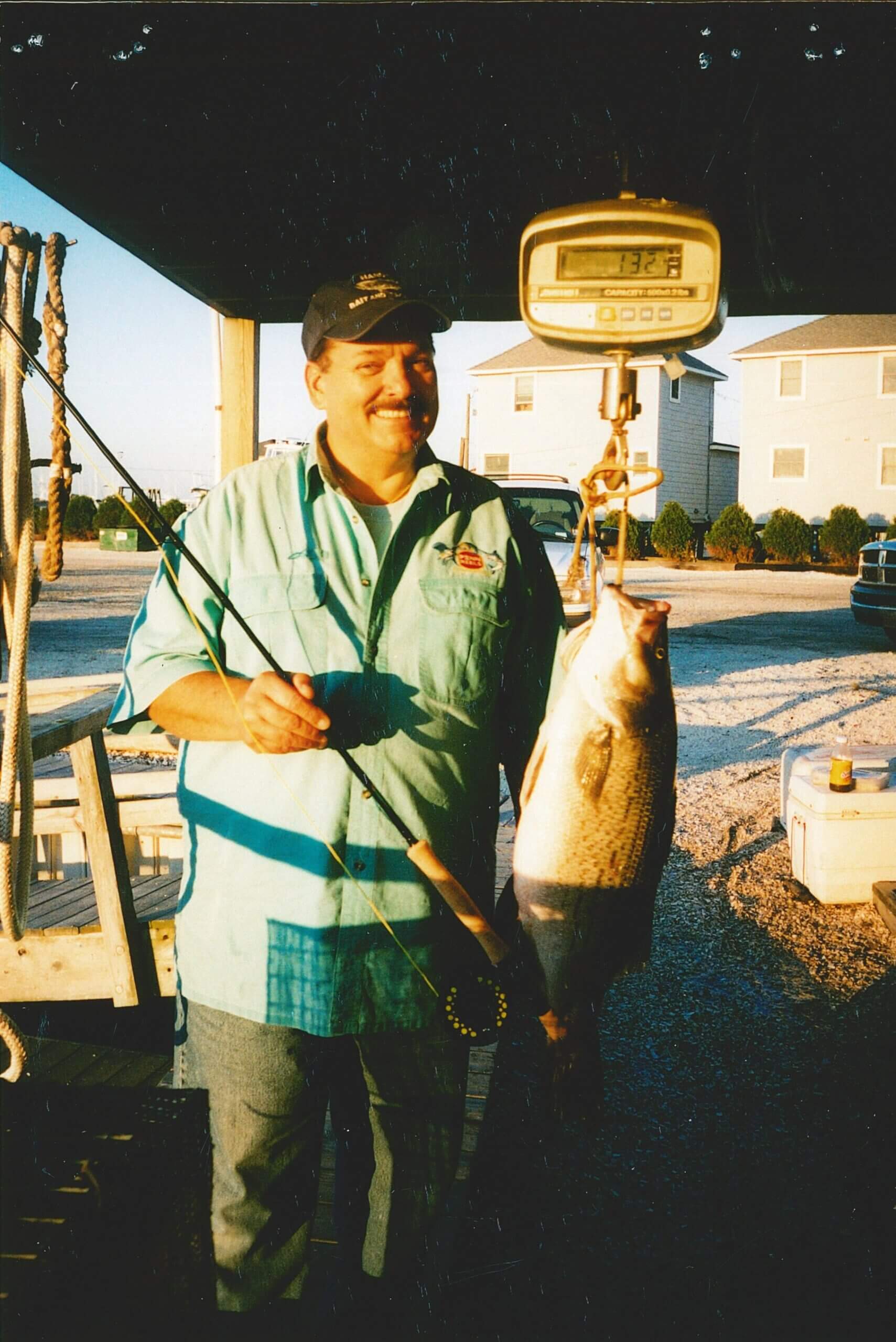
|
 Official Site of The State of New Jersey
Official Site of The State of New Jersey
